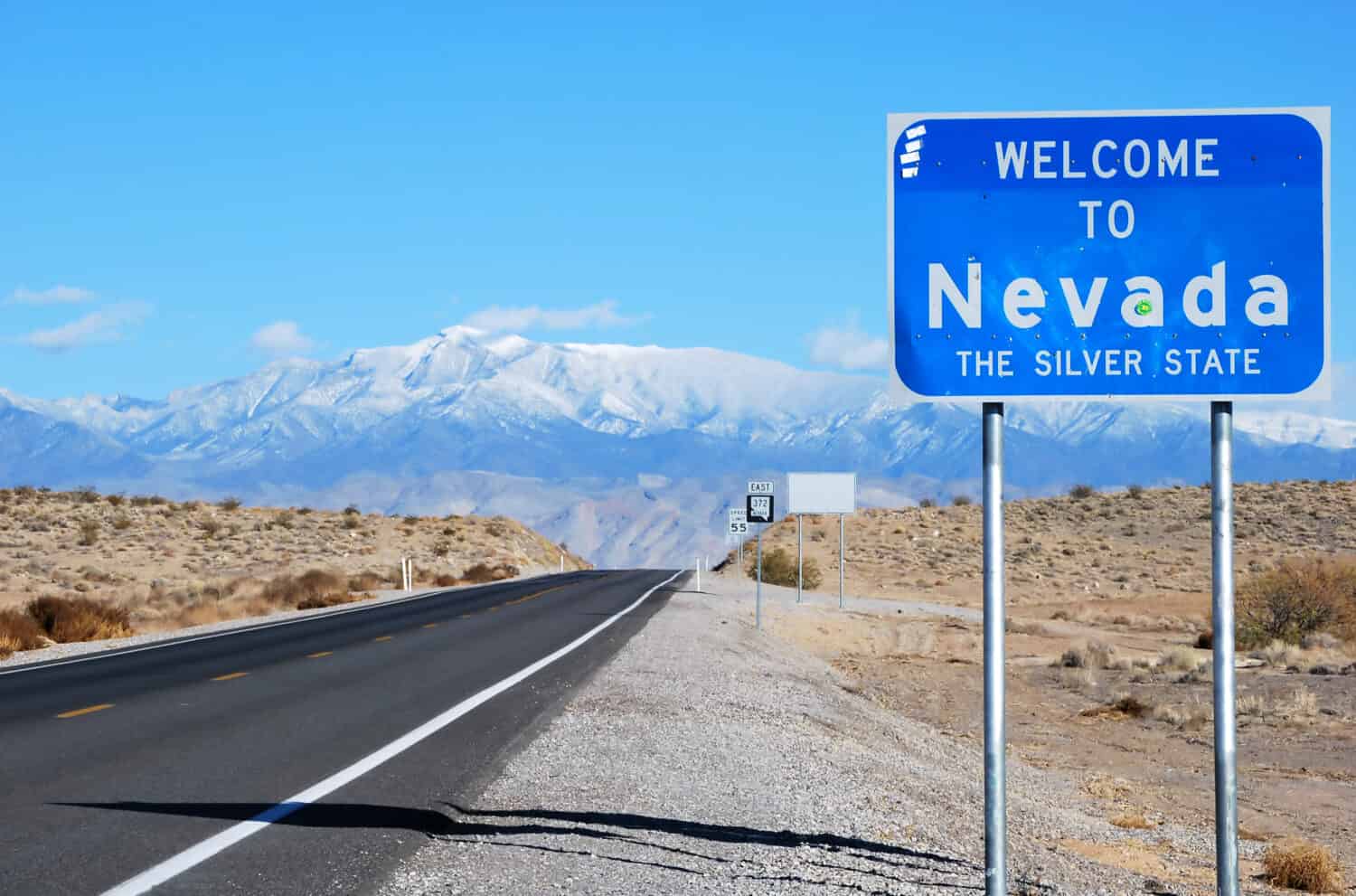Lovelock Cave is a fascinating land feature in northwestern Nevada with a mysterious past. Formed by an ancient lake and home to incredible archaeological discoveries, this unique cave is sure to excite. This article explores the history, geography, and geology of Lovelock Cave as well as how to visit it.

Lovelock Cave was formed by an ancient lake in western Nevada.
©RedTango/Shutterstock.com
History of Lovelock Cave
Lovelock Cave was formed during the Ice Age (Pleistocene) by Lake Lahontan, a massive former lake in western Nevada. According to a paper by UC Berkeley, it was inhabited by humans at least as far back as 1000 B.C. It is an important archaeological site because of unique artifacts discovered there.
In 1911, the cave was mined for bat guano, which was used as fertilizer. The miners found many artifacts, but not all were saved. The owner of the mining company ultimately contacted the University of California about the artifacts. Thus began the first archaeological exploration of the site in 1912.
The site has been explored several times since then, each exploration uncovering more artifacts as well as human remains. The most famous artifacts found in the cave are duck decoys made from tule. These decoys were dated to be from about 300 B.C., making them the oldest ever found in the world!
One of the most mysterious possible discoveries at Lovelock Cave may have never actually happened, but it is still a fascinating story. Workers from the 1911 bat guano mining project said that they found a human skeleton that was 6 foot 6 inches tall. If true, this would be shockingly large compared to the average human. However, this discovery cannot be verified as the skeleton is missing.
Geography and Geology
Geography
Lovelock Cave is located in Churchill County of northwestern Nevada, just east of the Humboldt State Wildlife Management Area. The cave is about 100 miles northeast of Reno and about 75 miles due east of the California/Nevada border. Lovelock, a town in Pershing County, is 18.5 miles north, making it the closest town to the cave.
The Humboldt State Wildlife Management Area (WMA), just west of Lovelock Cave, is an area of seasonal salt marshes at the end of the Humboldt River. Since Nevada is in the Great Basin topographical region, its watersheds are endorheic, meaning they do not drain into external bodies of water. Whereas most rivers ultimately flow into an ocean, the rivers in Nevada typically flow into seasonal lakes.
Geology

Lovelock Cave is 160 feet long and 40 feet deep.
©instacruising/Shutterstock.com
Lovelock Cave is made of limestone, which is a type of sedimentary rock called carbonate rock. Sedimentary rock is formed from deposits of sediment at the Earth’s surface. Over time, these minerals and organic materials experience cementation, a process by which crystalline materials form between the sediment grains and harden them into rock. Carbonate rocks are a kind of sedimentary rock that is made of carbonate materials, meaning materials containing the carbonate ion. Since limestone is made of calcite and aragonite, which are carbonate minerals, it is a carbonite rock.
Lovelock Cave was carved out of limestone by the currents and waves of Lake Lahontan, a Pleistocene Lake that dried up around 9,000 years ago.
What Lurks Inside Lovelock Cave?
While Lovelock Cave was once the site of human activity, today it sits empty. Inside and around the cave are signs of the incredible archaeological discoveries at the site.
However, the nearby Humboldt Wildlife Management Area (WMA) is a haven for wildlife. Since the salt marshes of the WMA are seasonal, wildlife populations vary over the course of the year. It is an important site for migratory birds such as mallards, Canada geese, and American coots.
Visiting Lovelock Cave
Lovelock Cave is on Nevada Bureau of Land Management (BLM) land and is open to the public. To visit, you will travel the Lovelock Cave Back Country Byway, one of Nevada’s backcountry roads. Since much of Nevada is remote, it is important to observe safety precautions when traveling its backcountry byways.
Here is the easiest way to get to Lovelock Caves. Coming from either Reno or Winnemucca on Interstate I-80, take exit #106 toward Downtown/Lovelock. If coming from Winnemucca, turn right on Main then left on Amherst. If coming from Reno, turn left on Main then left on Amherst. As you head southwest out of town, Amherst becomes South Meridian (Nevada State Route 397 South). From here, follow signs for Lovelock Cave. Turn right onto Derby Road, cross over the Humboldt River, and take the furthest right road when the road splits into three. Continue straight until reaching the parking lot.
For those who don’t have plans to visit Nevada but still want to view the cave, there is a virtual tour available for free online.
Where is Lovelock Cave Located on a Map?
Thank you for reading! Have some feedback for us? Contact the AZ Animals editorial team.







